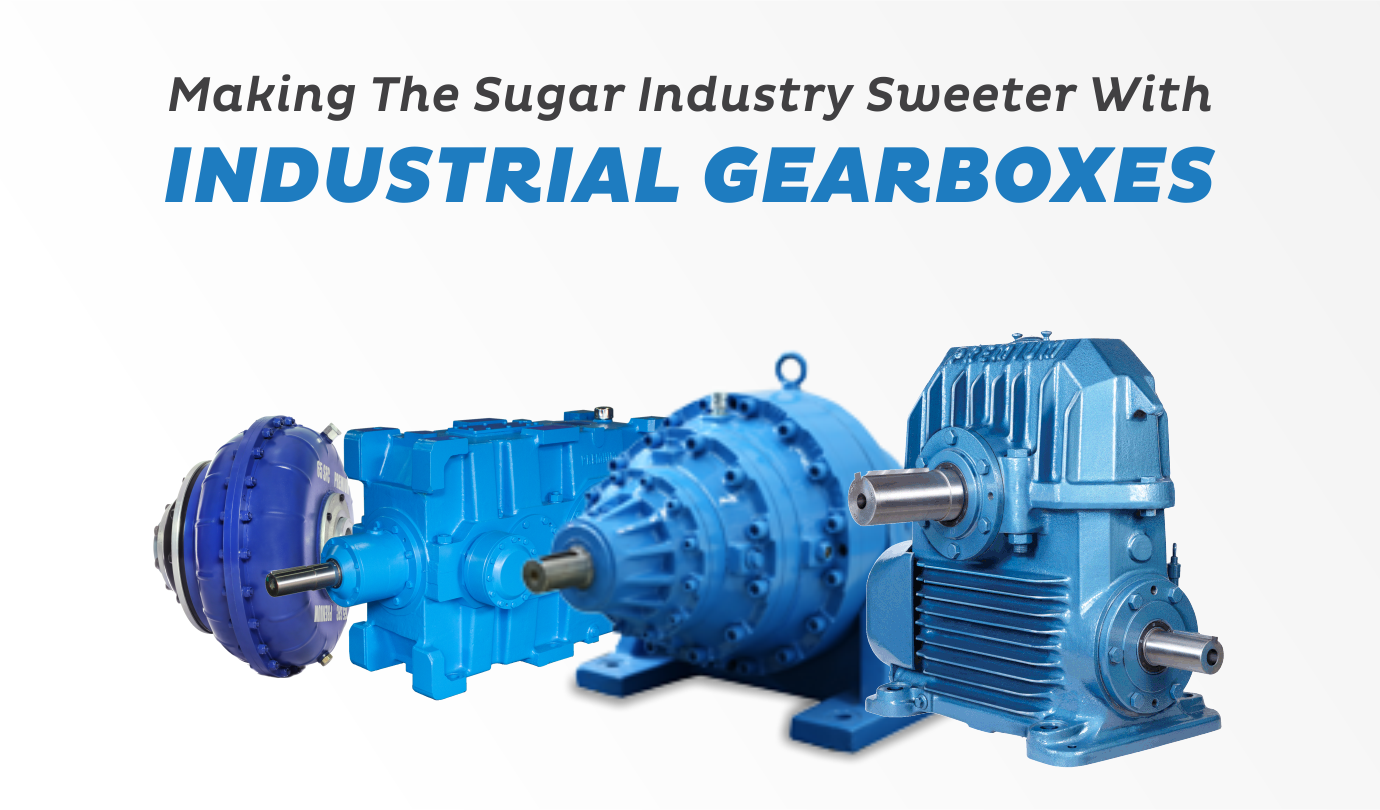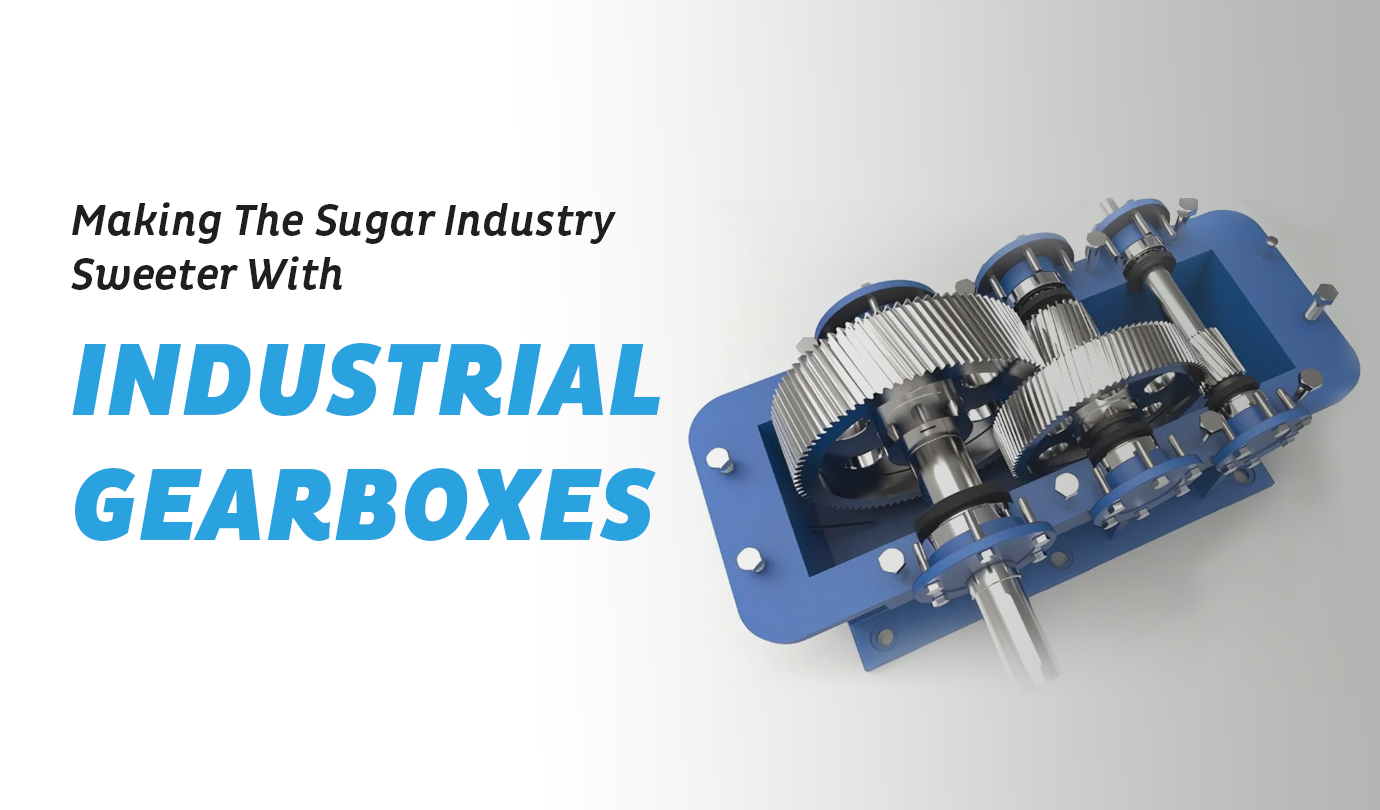The sugar business extensively uses a wide range of equipment throughout sugar manufacturing, from sugar cane and beet harvesters to feed conveyors. One of the most important sectors worldwide, it uses gearboxes to keep economies moving in many nations.
Sugar is a versatile raw material that has several applications outside confections. Alcohol, natural fertilizer, fuel from ethanol, paper, stove granules, and sustainable thermal and electrical energy are just some of the products that may be made from this versatile raw material. Gearboxes will assist in maintaining steady sugar output as demand rises. Learn more about the use of gearboxes in the sugar industry.
Sugar: An Expanding Market
Sugar cane and sugar beets are the main raw materials for producing sugar. The world produces more than 170 million metric tons of sugar per year. The United States produced 8.2 million metric tons in 2015, earning $4.03 billion. Brazil, India, Pakistan, Thailand, and China are among the world’s top sugar producers.
The United States is distinguished from other nations by its advanced sugarcane and sugar beet businesses. The sugar business has flourished because of increased acreage, new technologies, and investments in processing machinery, such as gearbox components. Unlike sugar beets, which may be kept for later use, sugarcane must be treated as soon as harvested to prevent the sucrose from deteriorating.
Gears and Their Application to the Sugar Industry
Experts in the gearbox industry design speed reducers for each operation in the sugar industry. Some such uses are:
- Powering farm equipment using hydraulic gear motors
- Vehicle unloading hoists
- Belt drives for sugarcane and beet-feeding conveyors
- Cleaning, washing, and drying cane and beets using roller conveyors.
- Machines for chopping and grating sugar beets and sugar cane
- Cane-cutting tools with a spinning cutter
- Towers for pressing sugarcane and beet juice
- Burning percussion
- Sugarcane and beet juice mills for drying
- Transporting sugar through belt conveyors
- Conveyor belts for cleaning up sugarcane char
- Powering the sugar crystallizer mixer
Gearbox components may also be found in the following:
- Crushing Mill
- Fiberizer, Carrier, Leveller
- Steam turbine generator
- Conveyors
- Chopper
- Spin dryers
- Digester, Screw presss
- Filters
- Shredders
- Mechanisms that use centrifuges
4 Things to Think About Before Buying Sugar Processing Machinery
Several factors are particular to the facility’s location and the operator’s goals that influence the design of a sugar plant. The appropriate kind and size of equipment to utilize in manufacturing is determined by carefully evaluating these criteria. Here are four things to think about before purchasing new machinery.
Raw Material Guideline
Sugar cane and sugar beet quality can fluctuate during the growing season. This has various implications for the manufacturing process and must be considered when designing a factory’s infrastructure. The brix (sugar-to-water) ratio and the absence of pollutants are two of the most important raw material properties that will influence the choice of equipment. (brix minus sugar content).
Crush Acceleration
The sugar factory’s needed daily and hourly crush rates are based on the total amount of raw material to be crushed and the duration of the milling season. Because it will become more difficult and expensive to make design modifications as the development schedule advances, determining crush rates early on is crucial to guarantee the appropriate equipment selection.
Detailed Project Objectives
Capital expenditures, operating expenditures, energy use, emissions, the quality of the raw materials, etc., are only a few factors that might constrain the layout of a sugar plant. Therefore, the purpose of process design should not be to choose the equipment that is either the least expensive or the simplest to install but rather to identify the equipment that most closely matches the needs of the project at hand.
Growth Potential in the Long Run
Considering a sugar plant’s potential for growth early in the planning process is important. Plants may be constructed flexibly in case major design modifications are required by calculating the economic implications of oversizing equipment or providing additional space for future expansions in capacity.
Conclusion
The uses of gearboxes in the sugar industry are tenfold. So, if you’re looking for high-quality machinery that can help you succeed in this industry, contact our experts at Premium Transmission.











